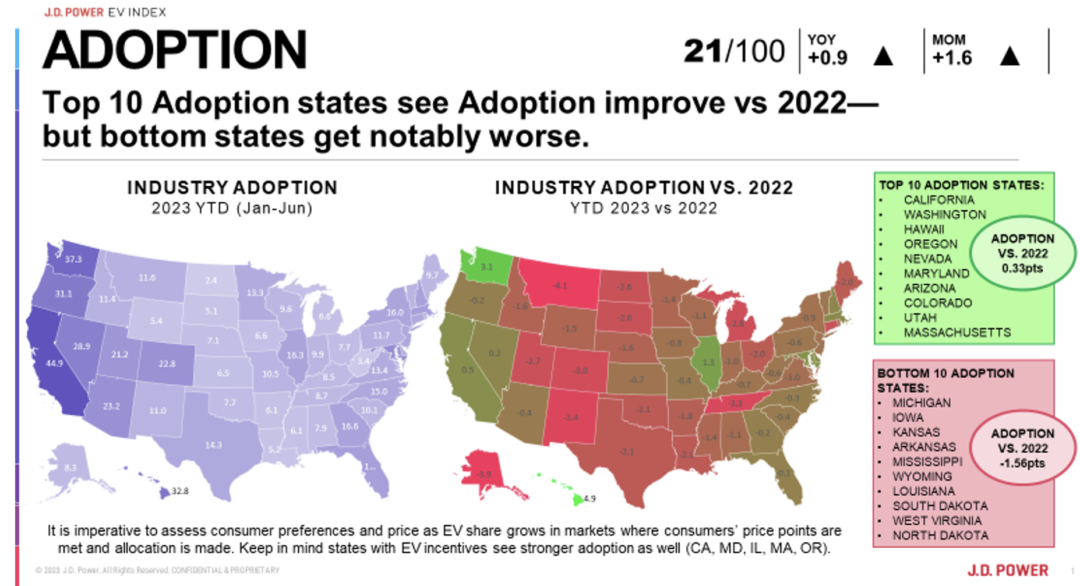J.D. Power: Split widens between U.S. states with high and low adoption rates of EVs
Electric vehicle market share grows nationally, but statistic masks growing gap between top 10 and bottom 10 states

A stark division is growing on the adoption of electric vehicles (EVs) in the U.S., with the top 10 states showing steady growth and the bottom 10 states posting declines, according to a report from market data and analytics provider J.D. Power.
That split between EV adopters and EV holdouts joins a “long list of literal and figurative lines of demarcation that illustrate the sharp geographic, political, socioeconomic, and cultural divisions between states in the United States,” the firm said.
And EV adoption in America is growing increasingly divided, with the most active states for EV adoption already on the path to parity with internal combustion engine (ICE) vehicles, but consumers steadily pulling back on EV purchases in the least-active states, J.D. Power said in its “E-Vision Intelligence Report.”
On a nationwide basis, EV adoption rates have continued to rise steadily, with EV sales now representing 8.6% of the total new-vehicle retail market. But that nationwide score overlies a significant variation on a state-by-state basis.
The pro-EV side encompasses those states that have been aggressive about offering incentives and building infrastructure to support EVs, including California, Washington, Hawaii, Oregon, Nevada, Maryland, Arizona, Colorado, Utah and Massachusetts. Meanwhile, other states have declined to follow those policies and accordingly have seen adoption rates decline on average in the first half of 2023. They include: Michigan, Iowa, Kansas, Arkansas, Mississippi, Wyoming, Louisiana, South Dakota, West Virginia and North Dakota.
Looking into the future, J.D. Power's “EV Retail Share Forecast” predicts these trends will create vast differences between states in coming decades. The forecast anticipates a national baseline estimate of 70% EV market share by 2035, with California leading the pack with 94% market share. But in that same year, North Dakota, which currently has the lowest EV adoption rate, is projected to have just a 19% EV market share by 2035, trailing behind South Dakota with a 35% share and Michigan with a 41% share.
Related Articles
Copyright ©2024. All Rights ReservedDesign, CMS, Hosting & Web Development :: ePublishing